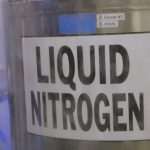Prize Overview
In 2010, the nonprofit Brain Preservation Foundation (BPF) announced a cash prize for the first individual or team to rigorously demonstrate a surgical technique capable of inexpensively and completely preserving an entire human brain for long-term (>100 years) storage with such fidelity that the structure of every neuronal process and every synaptic connection remains intact and traceable using today’s electron microscopic (EM) imaging techniques.*
In our analysis, this prize is by no means impossible to win, but neither is it easy to win. Winning will require a significant investment of time and resources, and may take many years to occur if it is not induced with an appropriately sized prize purse.
This prize competition is structured into two Stages:
Stage 1– Preservation of an entire mouse brain (or similar small mammalian brain) using a technique that is applicable to a laboratory environment. Note: this prize has now been won.
Stage 2– Preservation of a large mammalian brain (a pig for example) using a surgical technique meeting all the medical standards necessary for it to be applied (as an elective procedure) to a human patient in a hospital setting, and using a procedure that, with minor modifications, might potentially be offered for less than US$20,000 by appropriately trained medical professionals.
The first group to complete Stage 1’s requirements will win 1/4 of the total prize purse accumulated up to that date. The first group to complete Stage 2’s requirements will win the remaining prize purse, or the entire prize purse if no one has previously met Stage 1’s requirements. Note: This prize has now been won.
Prize Donors
BPF is committed to providing transparency on large donations. Our current policy is to break out all donations and legal donor pledges at or above $1,000 in any of our five donation categories as line items, while respecting the rights of any donors who wish to remain anonymous. Individual prize donations below $1,000 are periodically reported in aggregate as an All Small Donors line item. Please see our Donations page for the current list of BPF donors.
Prize Rules and Structure
For a complete list of the prize rules and structure, please see:
BrainPreservationTechnologyPrizeRules_Ver1.0.pdf
For a discussion of the motivation behind the prize, a brief history of the idea of brain preservation as a medical procedure, an accessible technical overview of the existing state-of-the-art in cryonic and chemical brain preservation techniques, and an overview of the electron microscopic imaging techniques that will be employed to evaluate the quality of whole brain preservation attempts, please see:
Background Information Pertaining to the Brain Preservation Technology Prize.pdf
Eligibility Rules for Prize Contestants
Charitable nonprofit rules require us to ensure that no BPF Officers materially benefit from BPF prize activities. In particular, BPF Directors, Officers, Judges, and Advisors cannot be contestants for BPF prizes. Such individuals must resign from Director, Officer, Judge, or Advisory positions if at any point they decide to become contestants. All others who have access to legally permitted research laboratory facilities, academic or industrial, are encouraged to apply to BPF to become contestants in BPF research prizes.
Information on Incentive Prizes
Around the world, roughly 220 incentive prizes are available with a purse of $100,000 or greater. Most, like the Nobel and Pulitzer Prizes, are annual prizes that reward excellence by recognizing prior achievement in a particular field. But the most rapidly growing category of prizes is inducement prizes. Between 1991 and 2009, 80% of new prize money was raised for prizes that reward future solutions to important social problems, and simultaneously stimulate the emergence of new products, services, and markets. Most inducement prizes are one-time prizes, with prize rules carefully written to achieve valuable technical and social objectives. We believe the Brain Preservation Technology Prize is such a prize. For more on the current variety of incentive prizes and their beneficial effects, see this McKinsey study, And the Winner Is… (2009).
Footnotes
* In the types of electron microscopy neuroscientists commonly use (FIBSEM, etc.), preserved neural tissue can be visualized down to about a 6 nanometer resolution. This allows them to directly see each neuron’s synapses and dendrites (connections to other neurons). This level of detail also includes the ability to image, directly and indirectly (via molecular probes), many elements of the “synaptome,” the number and types of special proteins (vesicles, signaling proteins, cytoskeleton), receptors (Glutamate, etc.), and neurotransmitters (at least six types in human neurons) that are known to be involved in long-term learning and memory at each synapse in the brain, and elements of the “epigenome” (learning-based DNA methylation and histone modifications) in the nucleus of each neuron. It remains an open question in neuroscience exactly which features of the synaptome and epigenome need to be preserved to retain memory and identity in each species. We know simpler connectomes, synaptomes, and epigenomes are used in organisms with simpler memories (C. elegans, Drosophila, Aplysia, etc.), and that the vast majority of neural molecules are not involved in learning and memory, but support other cell functions necessary for life. Chemical fixation and cryonics both preserve the fats, proteins, sugars, and DNA in living neurons, and fix them effectively in place, and relevant membrane receptors stay in their normal distributions as well, as verified by antibody probes. What we don’t know yet is if this happens reliably everywhere during whole brain chemical and cryonic preservation. We also don’t know the full complement of small molecules and cytoskeletal features in our neurons and glia that are necessary to memory and identity, and which molecular signal states (eg., phosphorylation, methylation) are important. But our knowledge of the molecular basis of learning and memory continues to rapidly grow, aided by exciting new neuroscience techniques (optogenetics, viral tagging, protein microarrays, etc.). Our ability to scan and verify is also rapidly improving. New types of electron microscopy, such as Cryo-TEM, can image at an amazing 3 angstrom resolution, 50 times greater magnification than FIBSEM, a scale where brain proteins and even individual atoms can be directly seen.
Our current Brain Preservation Technology Prize is focused on the connectome, imaged at FIBSEM resolution. As neuroscience advances, we may learn that certain features of the synaptome and epigenome not presently observable by FIBSEM must also be preserved. In that case, the Brain Preservation Foundation will offer additional Technology prizes, and make use of other verification methods and even higher resolution imaging if necessary. Bottom line: As neuroscience continues to advance, BPF will do our best to help science to determine whether reliable and affordable protocols can be found to preserve those brain structures that give rise to our memories and identities, according to our best evidence to date.






